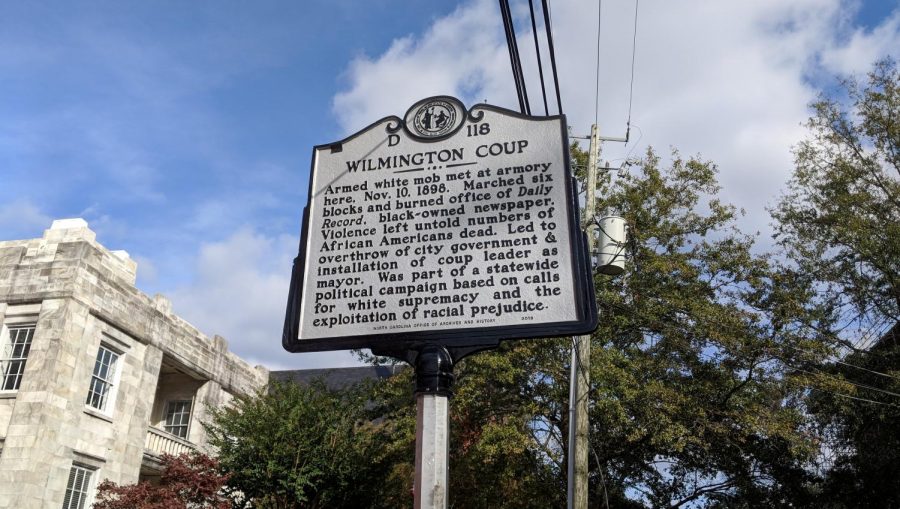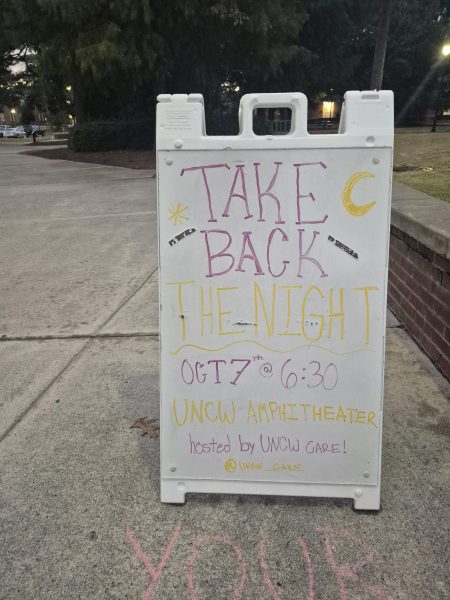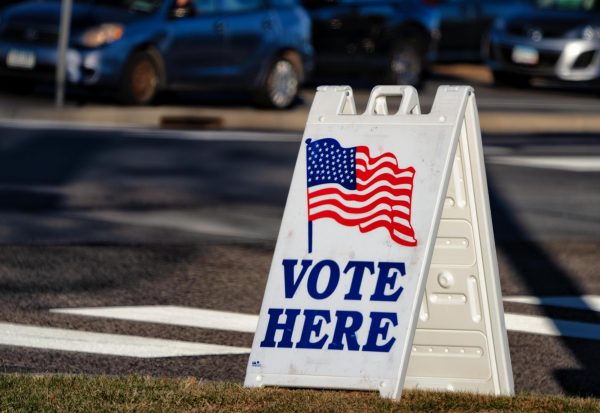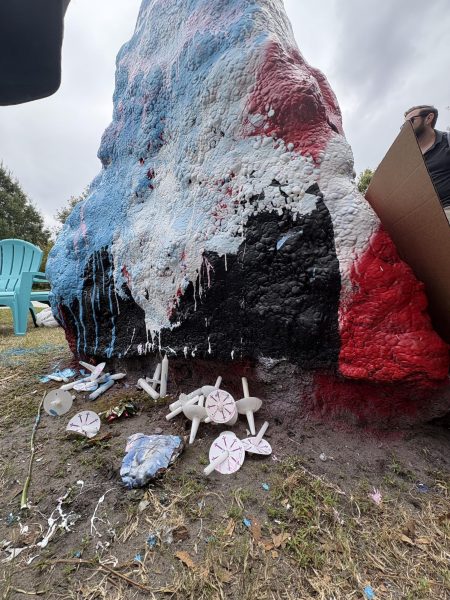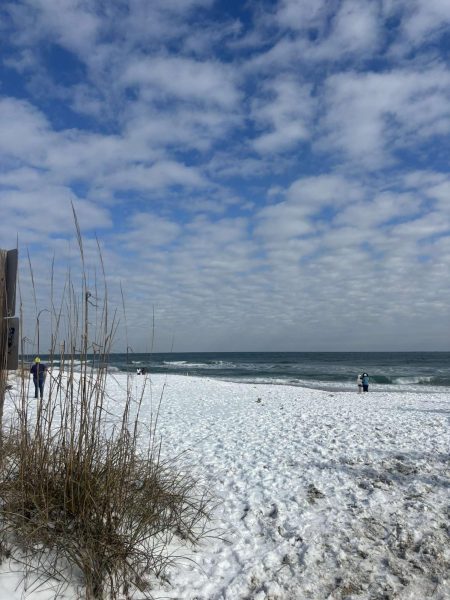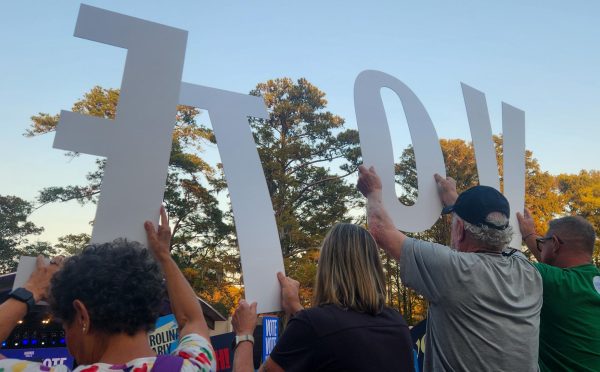New highway historical marker commemorates 1898 Wilmington coup
Th highway historical marker commemorating the 1898 coup, located on Market Street between Fourth and Fifth Street.
A new roadside historical plaque that has been in the works for almost two years was finally unveiled on Market Street between 4th and 5th streets on Friday, Nov. 8.
It commemorates the massacre in which a mob of roughly 2,000 marched about Wilmington and set ablaze many buildings, including Free Love Hall. An African-American newspaper called the Daily Record was headquartered there, and journalists for that paper wrote articles supporting the city’s Republicans and Populists and opposing the Democrats, who tended to support the Confederacy during the Civil War.
The chain of events leading to the violence can be traced to the Civil War, during which Wilmington was a major Confederate trading port but was captured by the Union in Jan. 1865. Racial tensions remained high even after the war ended and a growing middle class of African-Americans began to establish themselves in the community.
In Aug. 1898, an editorial article from the Daily Record by Alex Manly enraged the local white population, who began organizing white supremacist clubs and demanded that every white man either join one or leave the city. Former Congressman Alfred Waddell, who actively participated in these clubs, gave a series of speeches to thousands of supporters in October. On Nov. 10, 1898, he met about 500 other men, most of whom were businessmen, Confederate veterans or both , in front of an armory on Market Street. The mob soon quadrupled in size and posed for celebratory photos after burning down the Daily Record.
Most African-Americans targeted by the mob either fled, were captured or perished. The mayor was forced to resign at gunpoint. Many other Wilmington officials of both races also stepped down. Although the exact number of casualties is unknown, a 2006 report estimated the number at 60.
Following the violence, which was the only successful coup d’etat in American history, the wealthy white men seized control of Wilmington’s government. They ordered that any African-Americans remaining for the 1900 election be barred from voting. Due to widespread fear, only 26 voted against the Democrats that year. This disenfranchisement continued until the Supreme Court ruled it unconstitutional in 1915.
The marker was unveiled during a ceremony near the armory at which the mob began its rampage. To maximize the degree of respect and remembrance, a special procedure was used to dedicate the plague. The N.C. Department of Transportation as well as the Department of Natural and Cultural Resources support the highway marker program. To learn more about the highway marker program, please visit their website, linked here.



